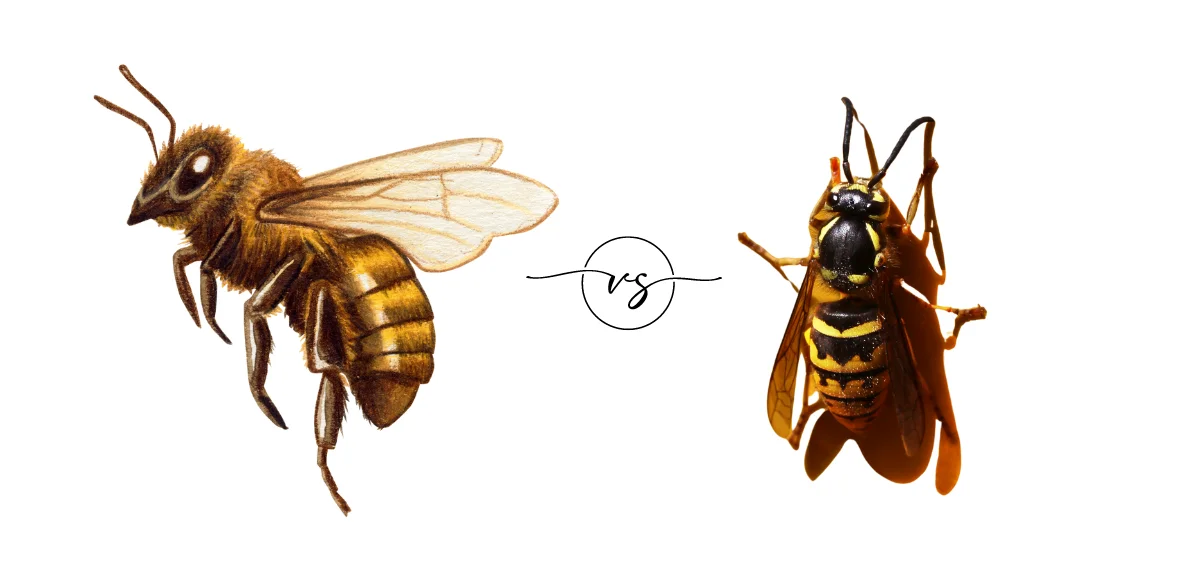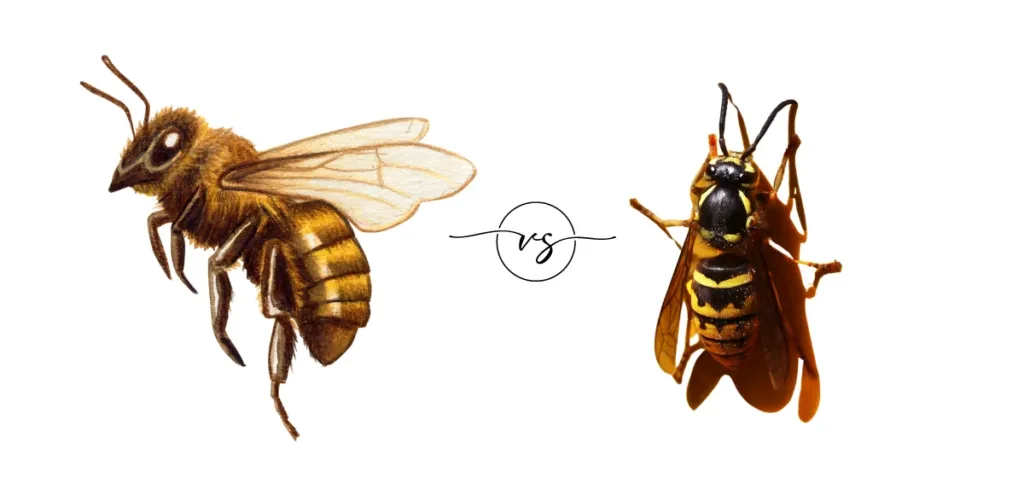
When the sky blazes blue and the sun is in full glory, we know that summer has arrived. The season is also marked by the all-too-familiar sound of the insects in the air. Two common ones are the honey bee vs yellow jacket. Many people mistake one for the other for obvious reasons. Both of them are pretty similar at first glance, as they share a similar colour palette and make the characteristic buzzing sound. But beyond these things, there are obvious distinctions between the two. Keep reading as we closely compare both creatures to find out their differences.
Read Also: Amazing Onion and Honey Benefits
Comparison Between Honey Bee vs Yellow Jacket
1. Appearance
Honey Bees
Honeybees vary in colour, but they are generally brown with a banded brown and yellow abdomen. Their thorax, head, and abdomen are extremely hairy. Hair is also present around the eyes and legs. Their legs have pockets for carrying pollen. Compared to yellow jackets, honeybees have fatter bodies.
Yellow Jackets
Yellow jackets are medium-sized. They have black or yellow antennae and yellow markings. Their body colouring is bolder than that of honey bees. They also have a shinier body and a pinched waist. Worker insects are about half an inch long, short, and stocky. The queen bee is larger, about ¾ inches. Unlike honey bees, the bodies of these wasps are not as hairy.
2. Social Structure
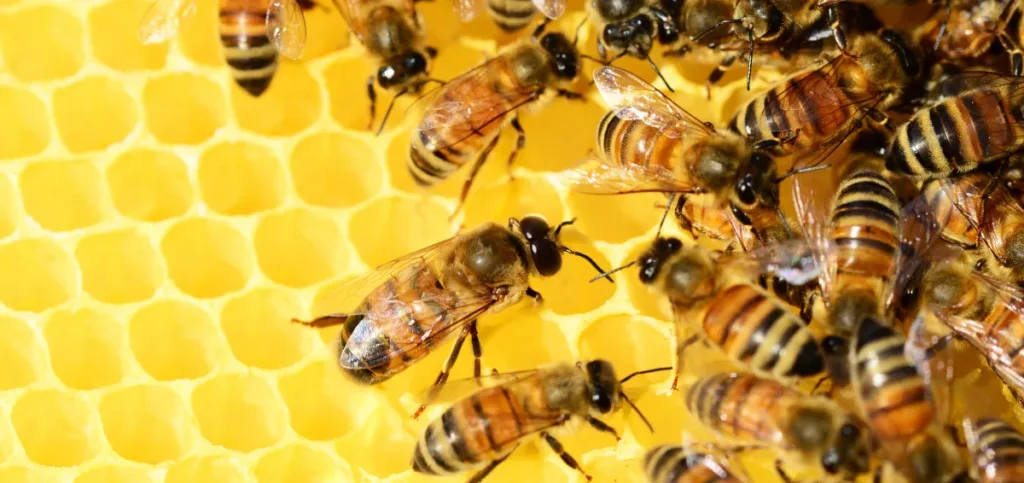
Honey Bees
The social structure of honey bees is similar to humans in various respects. They live in groups and work together. However, they also differ from humans and yellow jackets in this aspect. They are eusocial. This implies that a honey bee is part of a type of bee. The type can be non-reproductive or worker caste or the reproductive or royal caste. Honey bees in the non-reproductive caste do the things necessary to make the hive function properly. They also ensure the survival of eggs and larvae of bees in the reproductive caste. Honey bees in the reproductive caste are involved in making more bees.
Yellow Jackets
Yellow jackets are also social. They reside in colonies consisting of workers, queens, and males. They follow the division of labour. Every nest has a queen who is involved in reproduction. Male yellow jackets fertilize the queen. Sterile female yellow jackets look after the queen, find food, look after the nest, and care for the offspring.
3. Behaviour
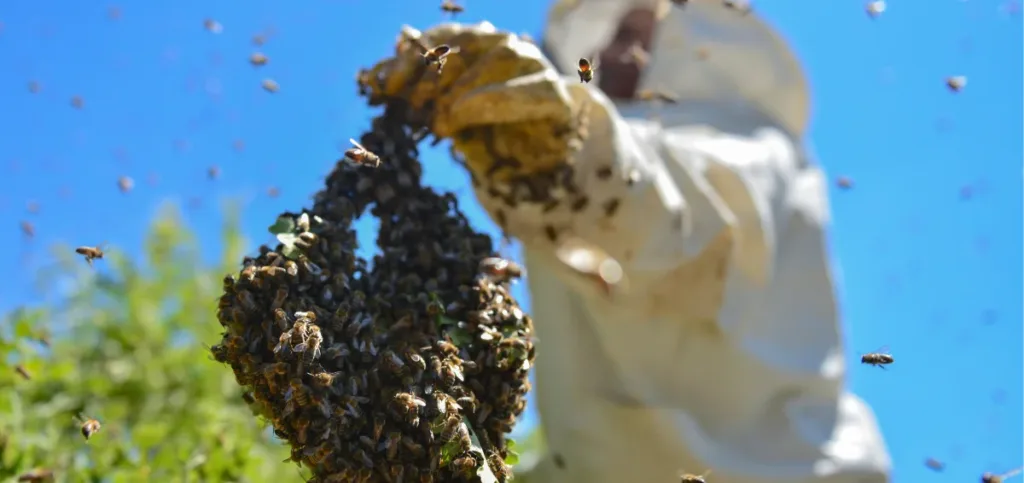
Honey Bees
Some species of honey bees showcase aggressive behavior, while others are not as aggressive. They turn defensive when intruders approach their nest, fiercely guarding the entrance. But they can only sting once. The worker bee, which stings, has barbs arranged in its abdomen. These barbs detach from the body of the bee after they sting. Honey bees die soon after stinging. But while attacking, they secrete pheromones. It has the effect of stimulating other worker bees to attack the intruder.
Yellow Jackets
Compared to honey bees, yellow jackets display a higher degree of aggressiveness. They attack when their nest is disturbed. The aggressiveness of yellow jackets is put to good use by way of their biology. They can sting multiple times and can even bite before stinging. They attack by grabbing the skin for a better grip with their stinger. Yellow jackets repeatedly sting, triggering harmful allergic reactions
4. Eating Habits
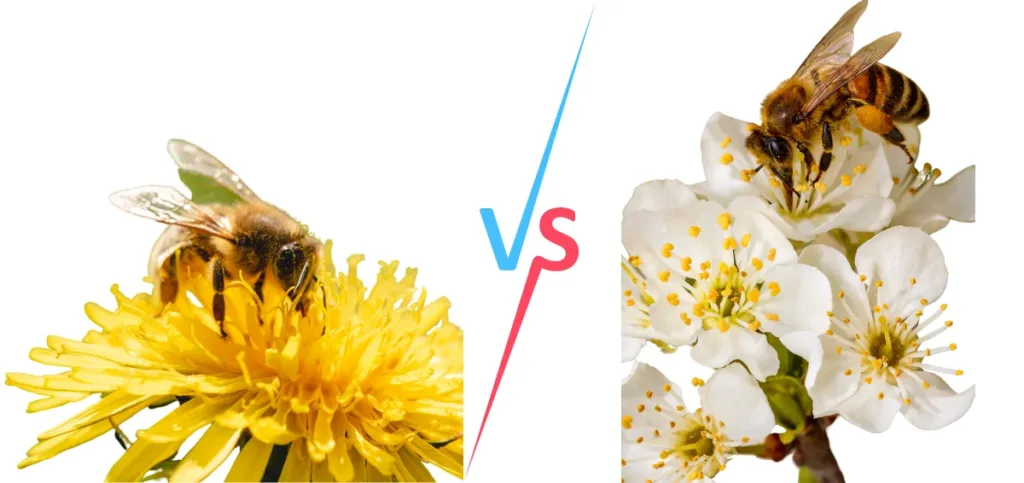
Honey Bees
Honey bees consume pollen and nectar from various flowers. These bees are a common sight in gardens and fields with abundant flowers. Most honeybee larvae eat honey, but those selected to become queens eat royal jelly. This is a white secretion produced by the young female bees who come in the worker category. Honey bees get nectar and pollen mainly from dandelions, milkweed, and clover, among other plants.
Yellow Jackets
Yellow jackets feed mainly on foods high in carbohydrates and protein, including fruit, plant nectar, insects, and fish. They chew the food to prepare it for larval consumption. Larvae generate a sugary substance that is consumed by adults. This food exchange between adults and larvae is called trophallaxis. Yellow jackets are also attracted to candy, cakes, fruit, juices, and different types of meat.
5. Nesting Habits
Honey Bees
Honey bees live in colonies created by female worker bees. They can be found living inside manmade tree boxes, hives, or hollowed-out trees. Colonies that survive until spring breed male bees or drones. Worker bees restart the process of building the colonies. Female worker bees build cell walls from beeswax. This is called swarming, and it leads to the creation of huge spaces that offer considerable protection. Honeybees’ nesting habits facilitate their survival and reproduction.
Yellow Jackets
Yellow jackets build their nests in hollow logs or underground. They can also build nests between walls, attics, and tree stumps. Their nests can also be seen inside recycling bins where sugars are stored. These creatures’ nests are made from wood fiber chewed into a paper-like pulp. The entrances are the size of a nickel. Yellow jackets venture more than 1,000 feet from their nests to forage for food.
6. Benefits to Society
Honey Bees
Honey bees play an important reproductive role in cross-pollination, which leads to species diversity and more vigorous plants. Their value in crop production cannot be denied. They contribute to higher yields and higher crop quality for growers and consumers. Honey bees are an invaluable contributor to a healthy agricultural economy. In their absence, various types of nuts, fruits, vegetables, and seeds would not be produced.
Yellow Jackets
The presence of yellow jackets proves useful around commercially grown vegetables and fruits and home gardens. They eat caterpillars and other types of pests on plants. But the benefits of yellow jackets are limited to this. They are not as effective as honey bees in cross-pollination.
Final Words
Honey bees vs yellow jackets share many things. However, they are also different in several aspects, as discussed above. From appearance to behaviour and nesting, both insects have their own place in the ecosystem. Comparing them helps us understand their uniqueness while harbouring a greater appreciation for these two distinct insects.

